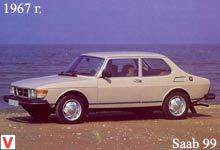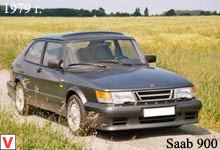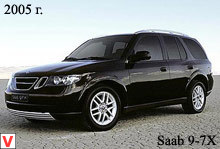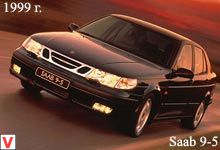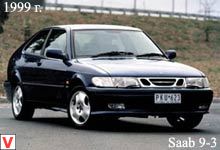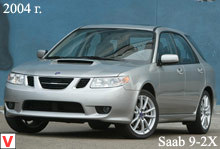
The production of the compact front-wheel-drive passenger car Saab 90 began at the plant of the Finnish branch of SAAB in Uusikaupunki in September 1984. The predecessor of the "90th" was the Saab 99, a similar model was also the Saab 900. In 1986, the suspension was subjected to a slight modernization and the exterior was updated. A total of 25,378 Saab 90 models were produced.
Their production was completed in September 1987. Sold "90th" in fact only in Scandinavia, mainly in Sweden. A series of this model, also called Saab 90 Lumikko (from the Finnish word “snow”) was also produced in limited quantities. The bodies of this version were painted exclusively in white; grade was richer than the base Saab 90. The Saab 90 model had a two-door five-seater sedan (coupe) type body. The body dimensions were 4344/1675/1429 mm with a base of 2460 mm and a curb weight of 955 kg. SAAB provided a guarantee against penetrating corrosion of the body for 3 years. Lights equipped with washers.

The steering wheel was height adjustable, but did not have an amplifier. The driver's seat was equipped with adjustments in two planes and heated. For an additional fee it was possible to install the hatch.
The carburetor inline 4-cylinder 8-valve engine with a camshaft DOHC volume of 1985 cm3 was located transversely in front. He developed a power of 100 hp. at 5200 rpm and had a maximum torque of 161 Nm at 3500 rpm. With this engine, the car accelerated to 100 km / h in 14 seconds and gained a maximum speed of 165 km / h. The average consumption of gasoline AI-92 was 10 liters per 100 kilometers. In 1987, the carburetor was improved taking into account the need to start the engine of the car in the harsh northern conditions.

Engines aggregated with 4- and 5-speed manual gearboxes. The model was fitted with disc brakes with amplifiers, both on the front wheels and on the rear wheels. In the suspension used strut. The size of standard tires was 175 / 70T R15. The small turning circle, 10.5 m, says that the Saab 90 was a fairly maneuverable car. A small weight of the car and a fairly powerful engine contributed to the good dynamics of this model of the Swedish automaker.
The great popularity of the "ninetieth" was not destined to be achieved, since it was sold only on the domestic market of Sweden.
